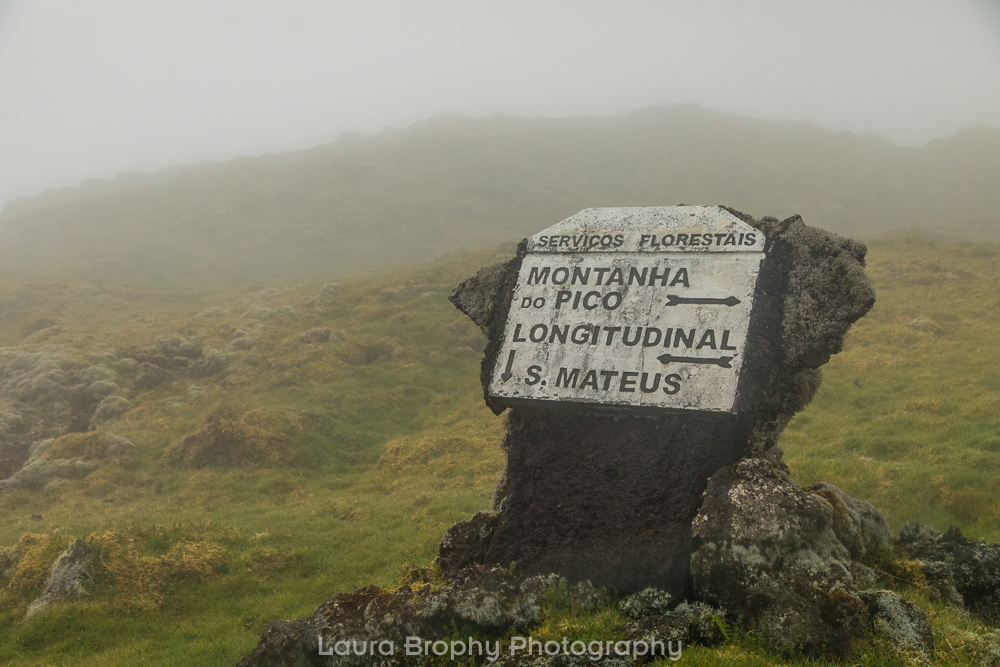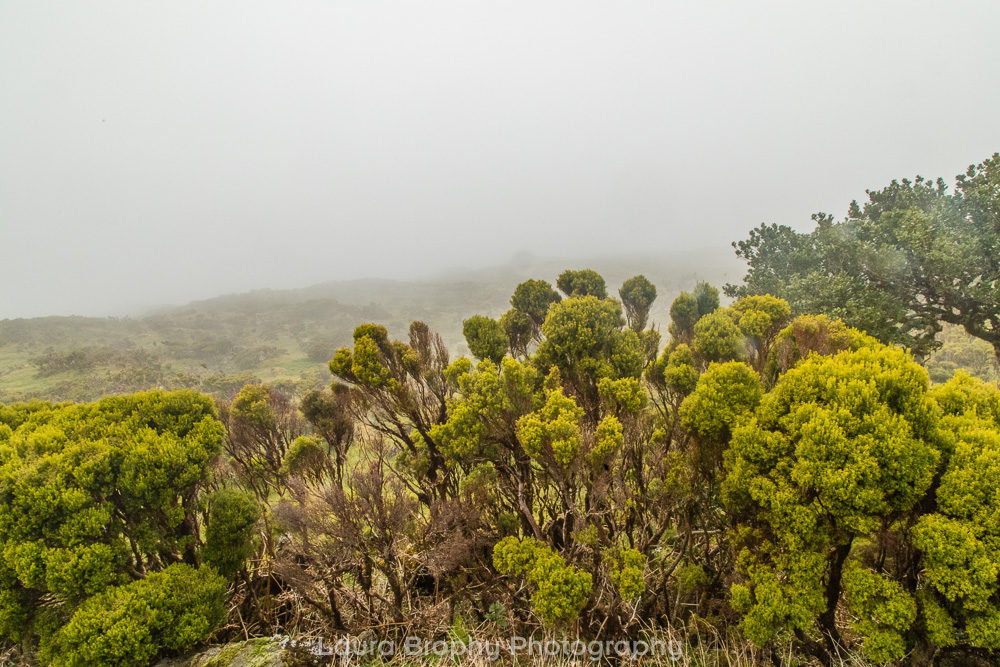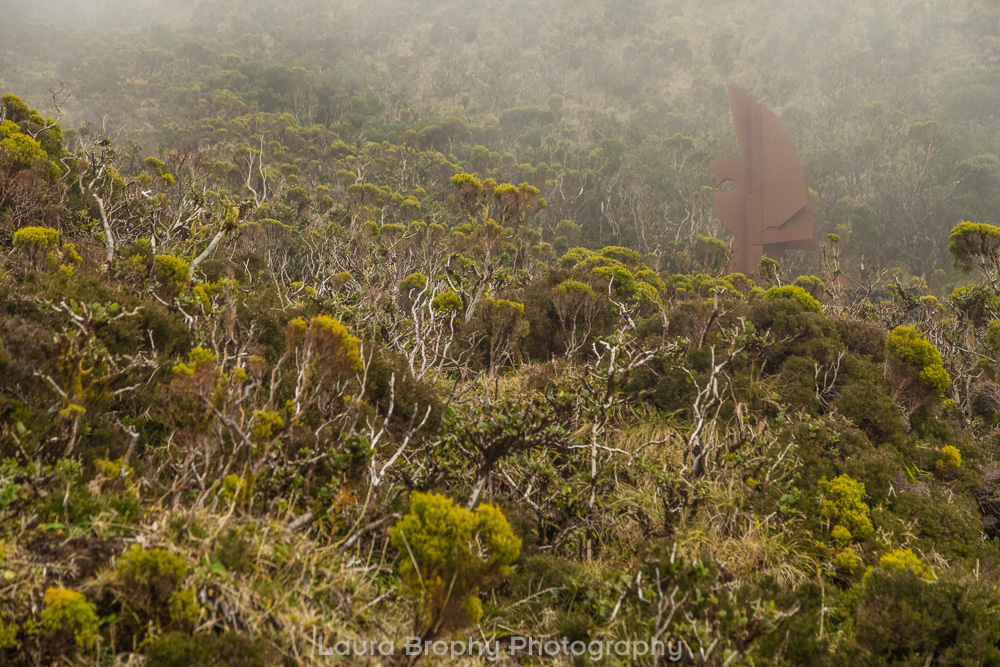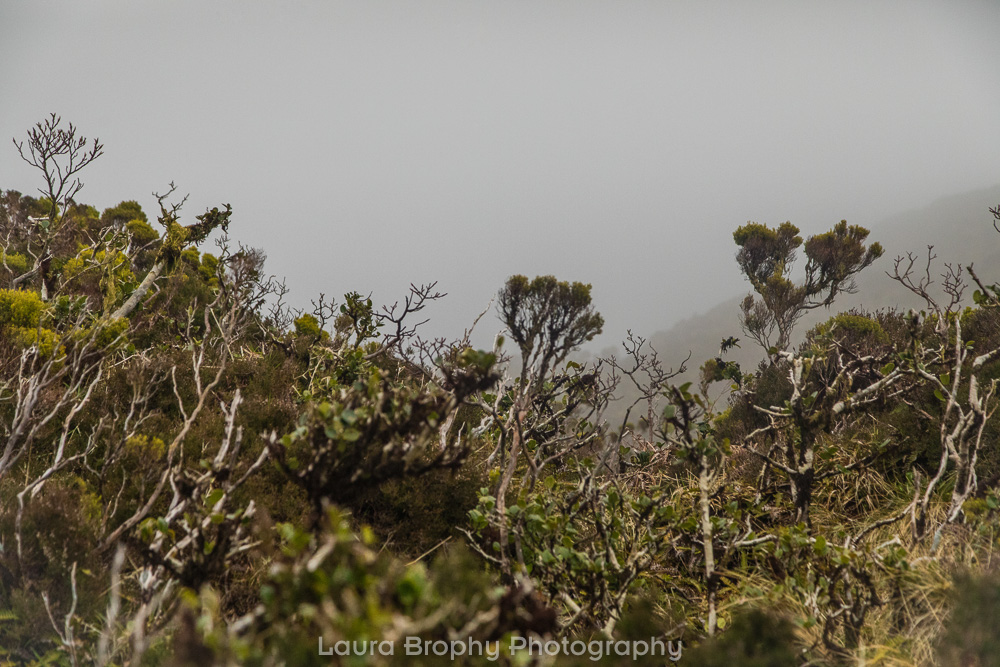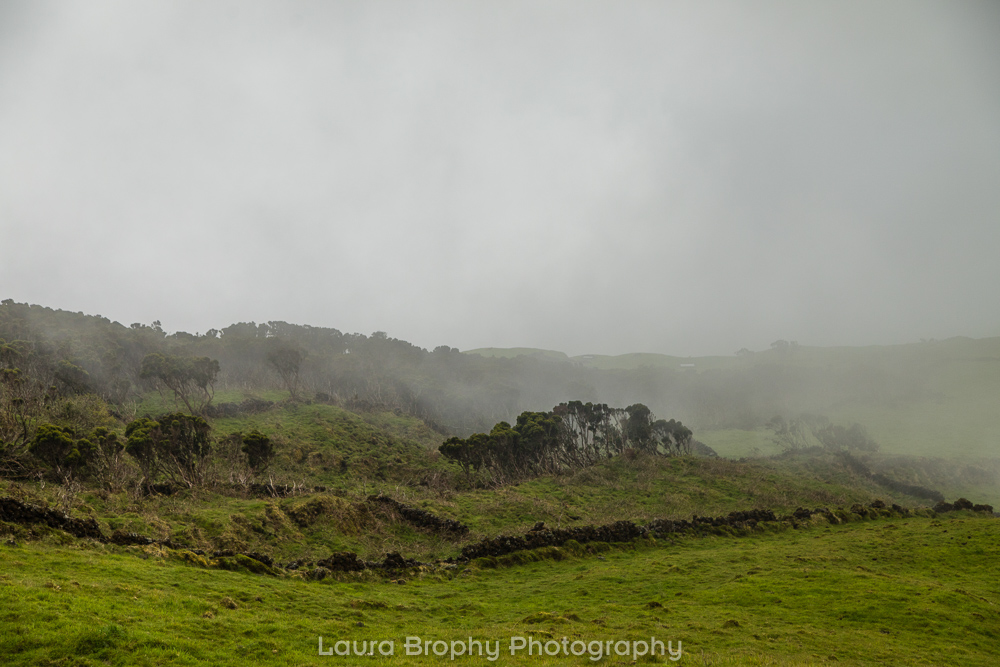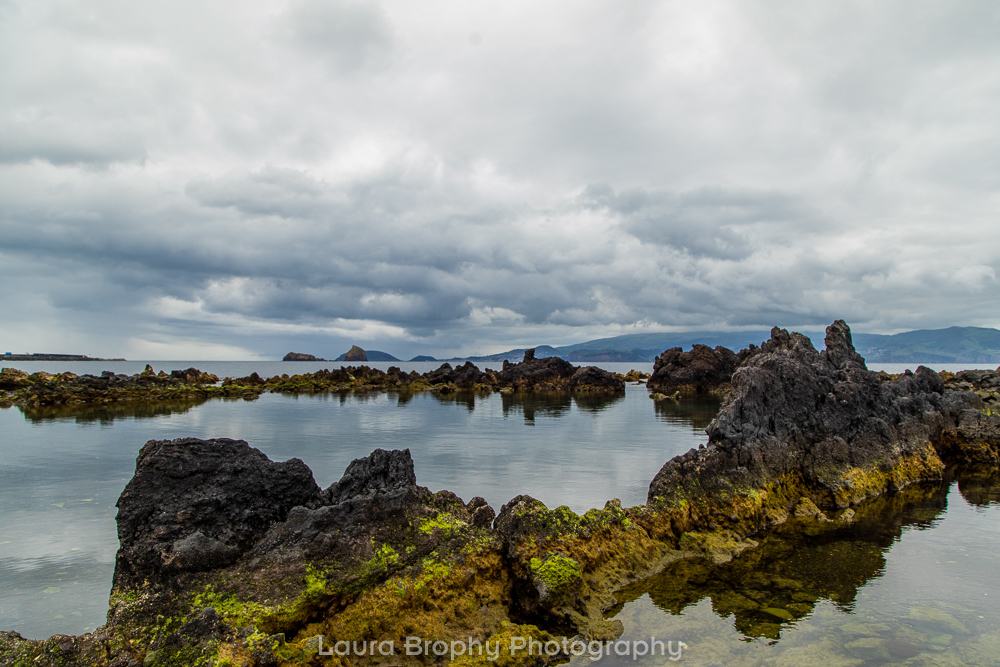On our last day on Pico, we enjoyed some quiet time at the beautiful house, and then set off to check out more of the western side of the island. In Madalena, we came across another natural pool, created in the sea by lava flow. We saw many of these — some very natural like this, others with more traditional pools cut into the rocks — in nearly every town on Pico and some on Sao Miguel too. Makes me want to return in the warmer summer months.
We drove miles and miles of the vineyards surrounded by the lava rock, a UNESCO World Heritage site. It was hard to even make sense of these — the backbreaking labor of people dating to the 15th century — making the most of less than ideal conditions to grow wine for export. Some vineyards were abandoned, but many have been reclaimed and replanted. In spring, before the vines green things up a bit, there is something very dark and sad about this landscape. The Azores Wine company is now producing some very good whites, grown in this lava rock and soil. On my next visit, I plan to explore more of the history and culture of wine growing on Pico.
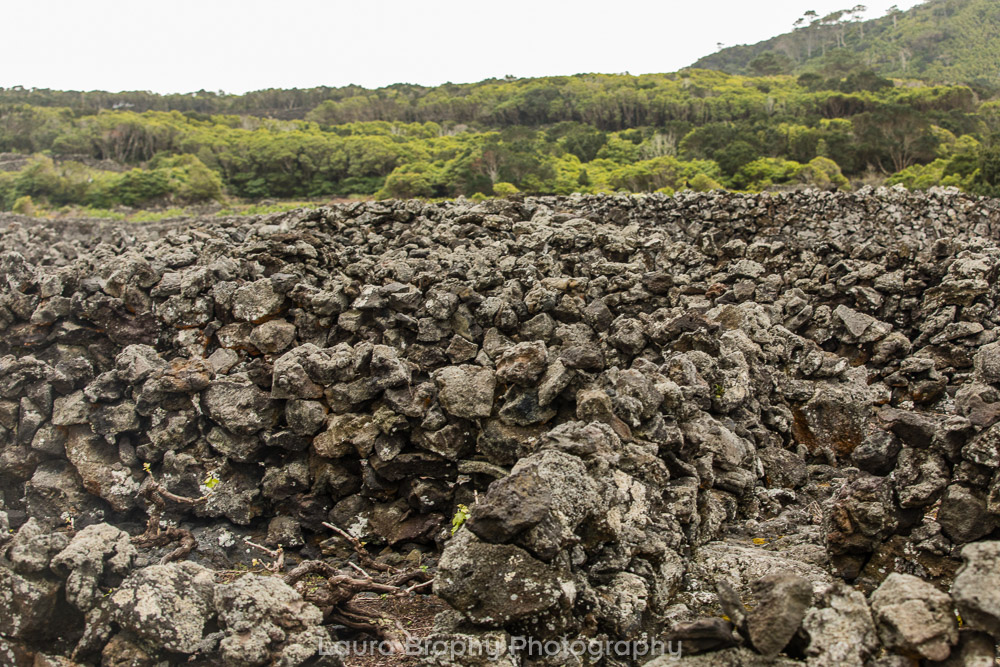
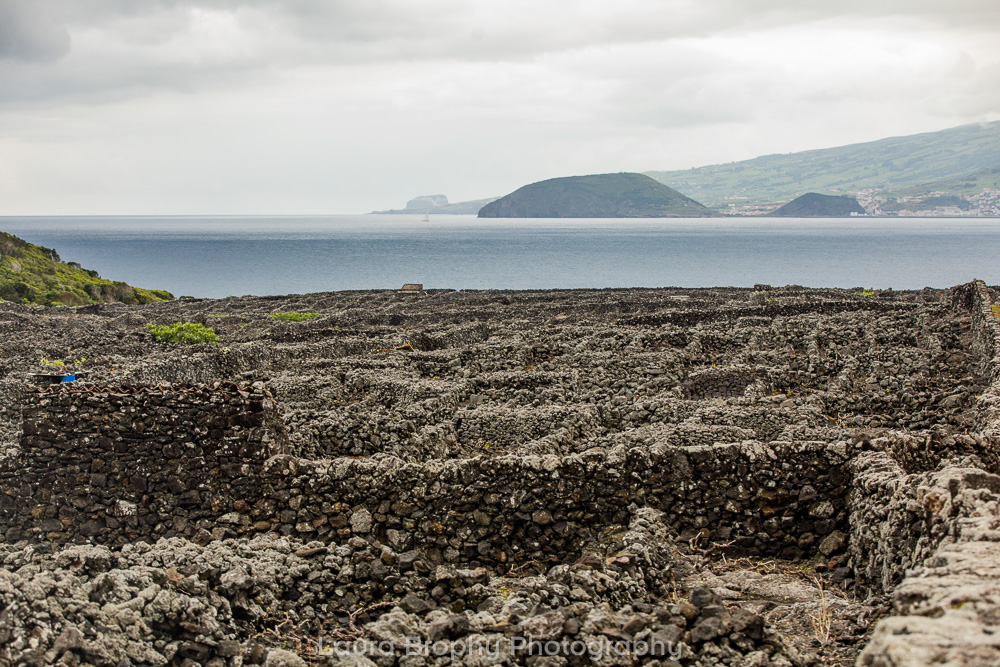
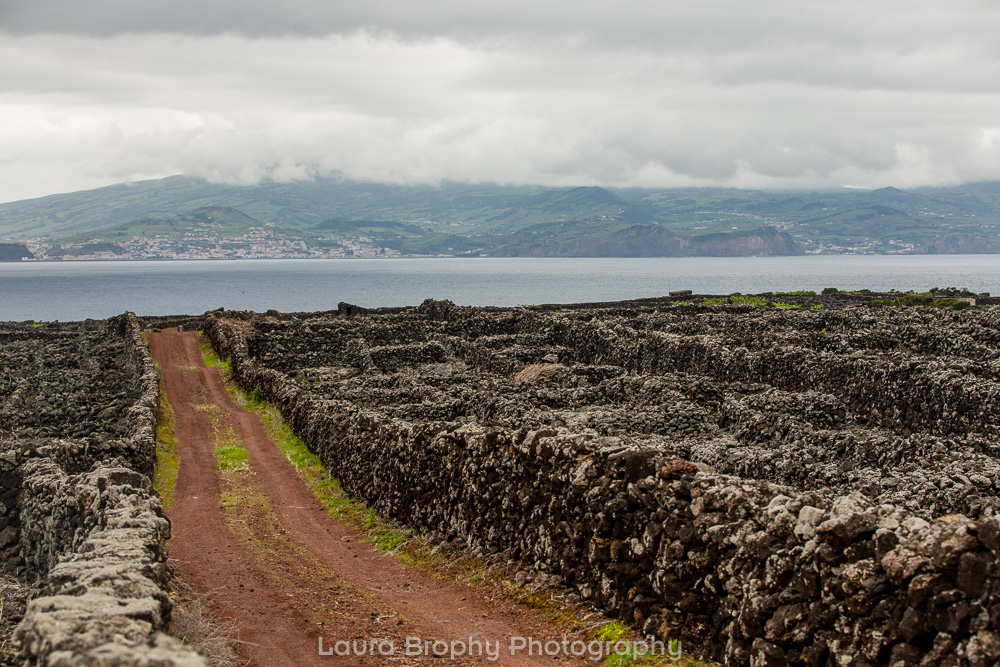
The vineyards are all close to the water, and opening up to fields for cows as you go higher up Mount Pico.
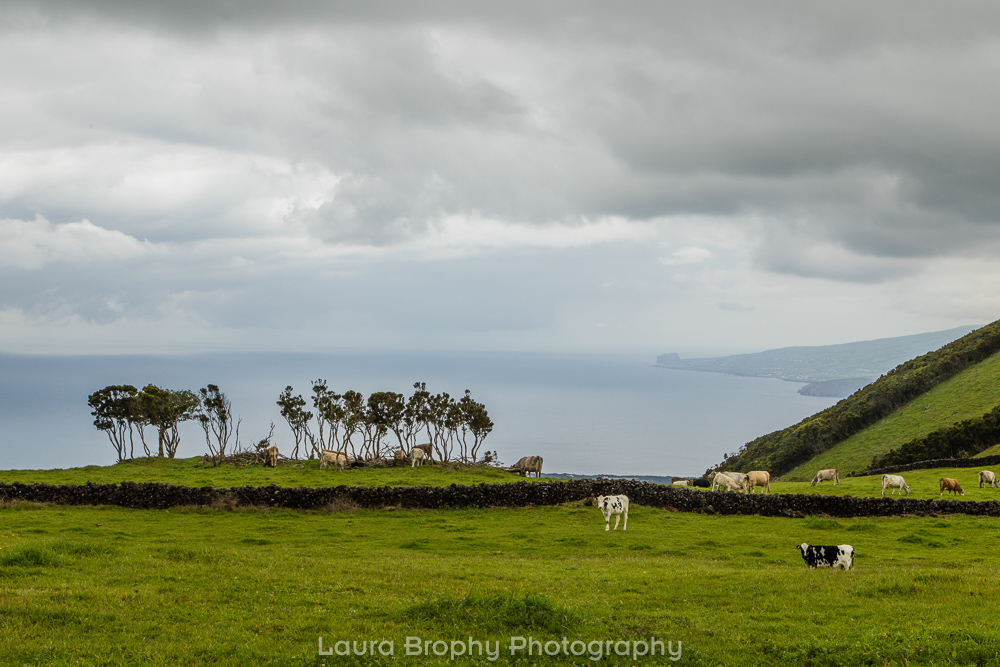
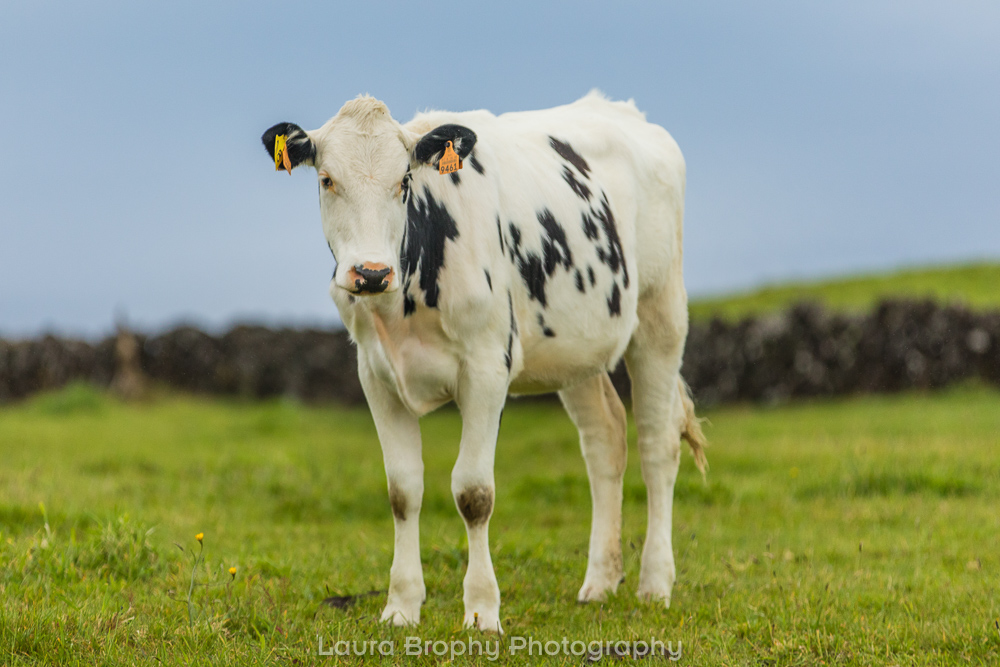
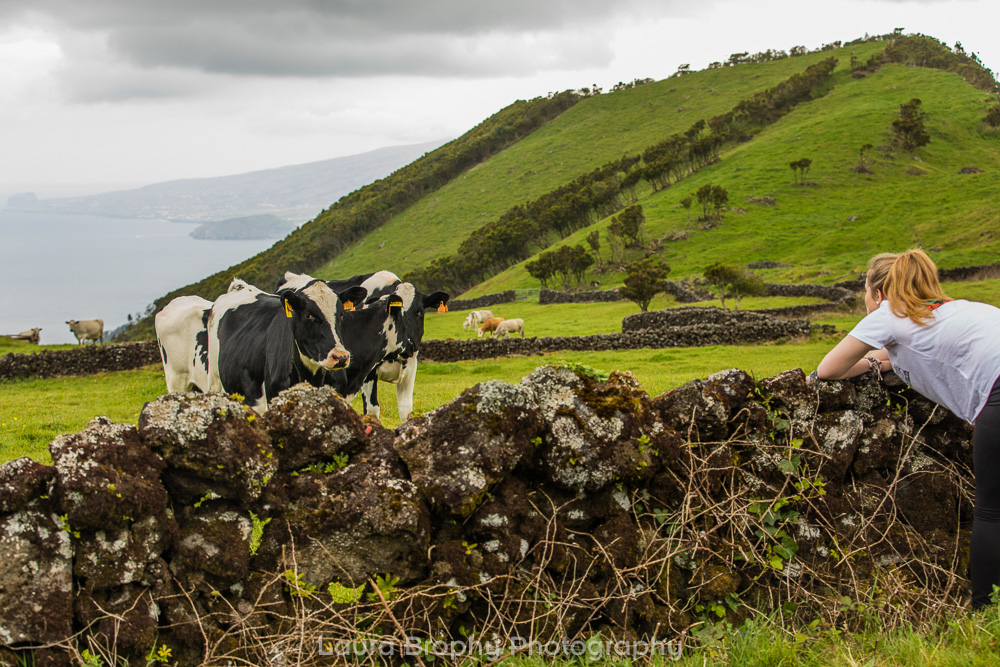
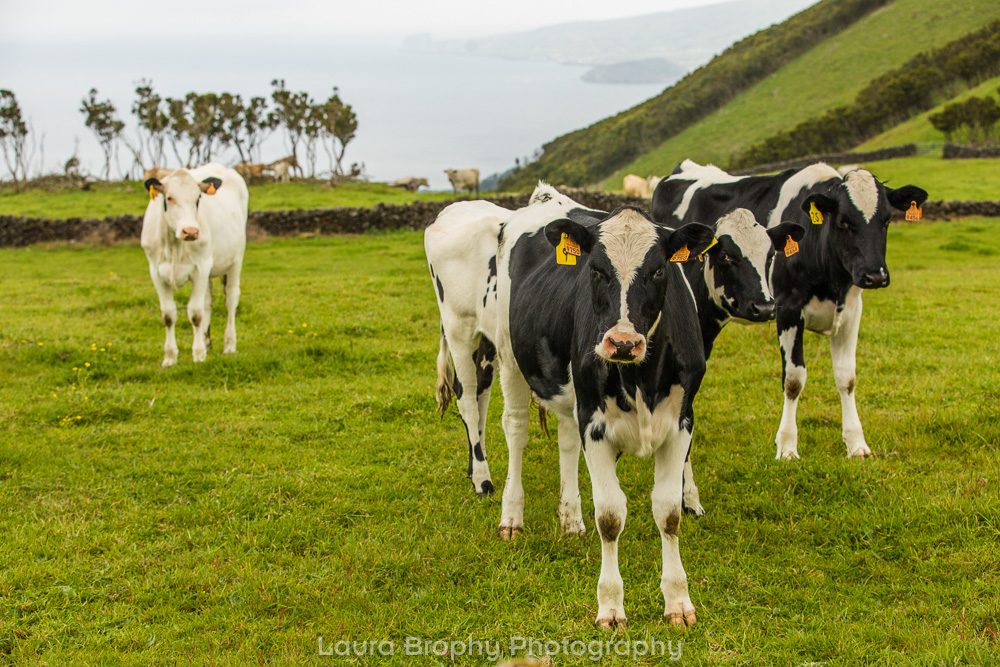
 Mount Pico was firmly in the clouds for much of our visit. We took a drive up to the visitor center (which isn’t much), and we had the sensation of being in a cloud. The stark landscape above the tree line was eerie. When we took off on our flight for home a few hours later, we could again see that the top of Pico was indeed above the cloud line. I will return to hike Pico someday.
Mount Pico was firmly in the clouds for much of our visit. We took a drive up to the visitor center (which isn’t much), and we had the sensation of being in a cloud. The stark landscape above the tree line was eerie. When we took off on our flight for home a few hours later, we could again see that the top of Pico was indeed above the cloud line. I will return to hike Pico someday. 